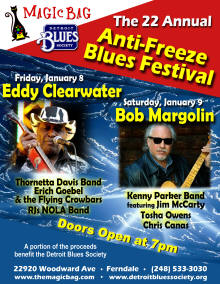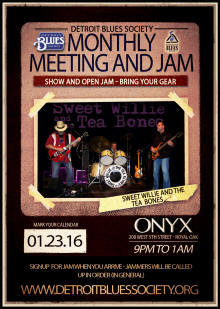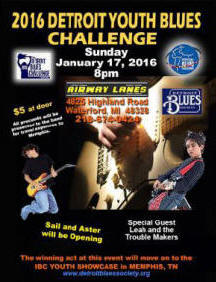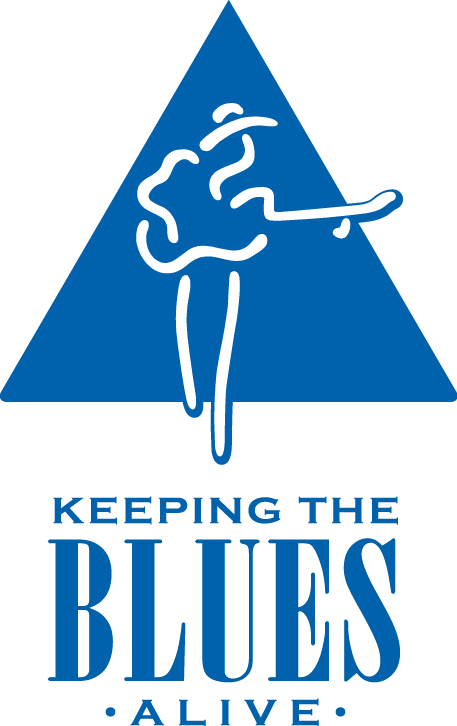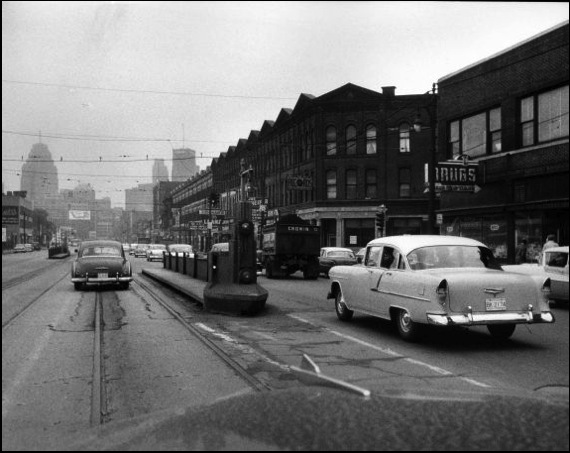
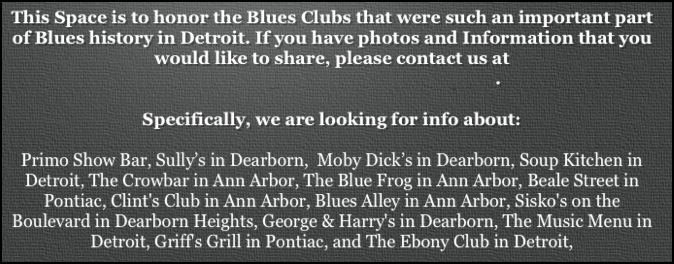
Memphis Smoke
100 S. Main St.
Royal Oak
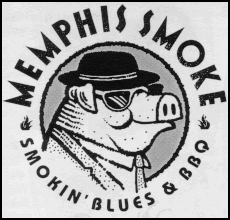

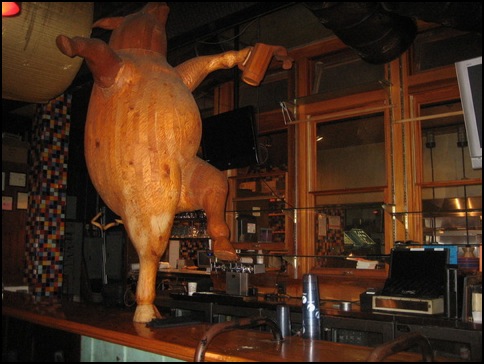
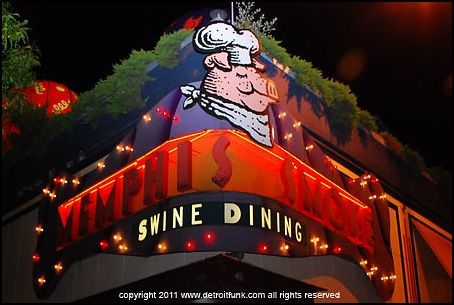
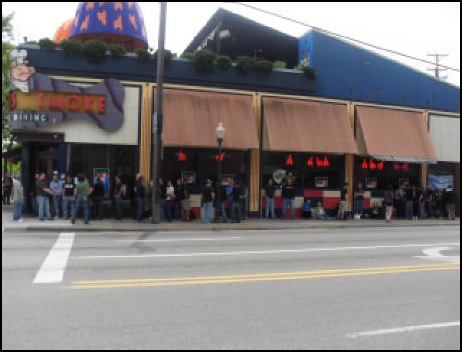
Memphis Smoke Finally Closes Its Doors
Manager said business had fallen since the restaurant
announced it September that it was closing.
December 28, 2010
After months of slow business because everyone thought it already was closed, Memphis Smoke finally shut its doors Dec. 26.
Late this afternoon, the last of the sound equipment was being rolled out of the Royal Oak music venue. What remained — tables, chairs, kitchen equipment and even the huge wooden pig on the bar — was included in the sale to the new owners, who plan to turn the restaurant into a Diablo's Cantina restaurant.
Premature publicity hurts in final months
General Manager Kurt Lehner said Tuesday that the restaurant, which had built its reputation on live music and Memphis-style barbecue, was supposed to have closed around Sept. 15 when a deal to sell the establishment to the owners of Rosie O'Grady's in Ferndale was expected to be finalized.
But Lehner said difficulties in closing the deal led to Memphis Smoke staying open despite a music-studded farewell in late August that was heavily covered by the media.
Lehner on Tuesday said he could not comment on why the sale seemed to be in limbo for so many months, and the owners of Memphis Smoke could not be contacted for comment. Lehner noted that the buyers had been trying to figure out how to play live music on the balcony, an idea that eventually was scrapped because of city noise ordinances.
"Who knows?" Lehner quipped as he sat at the empty bar. "Especially in this economic environment, sometimes deals just don't pan out like everyone thinks they're going to."
"I can tell you the owners are very heartbroken over (the decision to sell Memphis Smoke)," Lehner said of the deal, which had been sought partly because of financial and other personal reasons on the part of the owners. Lehner admitted Tuesday that publicity about the restaurant's closing was probably a mistake, since it soon after looked like it would remain open indefinitely. But the word was already out, Lehner said. People thought Memphis Smoke was closed, and business suffered.
Barbecue venue also hosted famous musicians
On a recent Friday night about a month ago, when the place would have normally been packed, it looked almost empty.
It was a stark contrast to a venue that was used to standing only crowds and two- hour waits on the weekends to be able to both dine and listen to the blues. Local bands were a regular feature at Memphis Smoke, which opened in the mid-1990s. The venue hosted internationally famous acts like the Goo Goo Dolls, Barenaked Ladies, Frankie Goes to Hollywood and Molly Hatchet.
Memphis Smoke's last night for business was for the Detroit Music Awards' Holiday Blues Showcase. On Monday night, the owners held a private party for about 40 staff members, all of whom stayed until the end despite the restaurant's shaky future. Lehner noted that the final deal "still is not on paper," but that he fully expects it to go through.
"The morale of the staff was good," Lehner said of the initial news that Memphis Smoke was closing. "I wouldn't have blamed anyone for going out and looking for other jobs, but that's how much loyalty people had to Memphis Smoke. It was like a family."
Longtime "sound man" Neil Sever started doing sound for Memphis Smoke when it first opened. On Tuesday he said that the closing of Memphis Smoke will create a "huge hole" in Royal Oak.
"But it will only be a hole for the people who liked to come here and listen to live music," Sever said. "For everyone else who only likes to listen to MP3s, there will be no loss."
Arguably, no other venue in Royal Oak had such a combination of dining and live music. Memphis Smoke also did not impose a cover charge for any of its musical acts, big or small.
"Memphis Smoke garnered a great reputation because it really put out
what it promised — good live music and good food," Sever said.
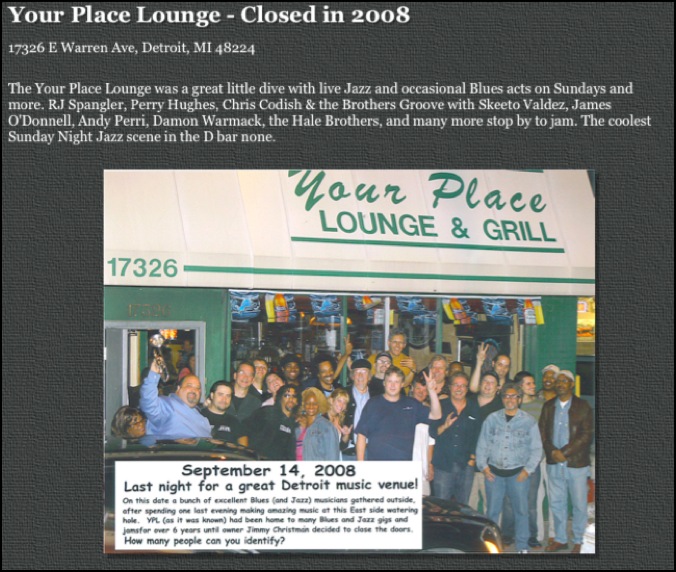

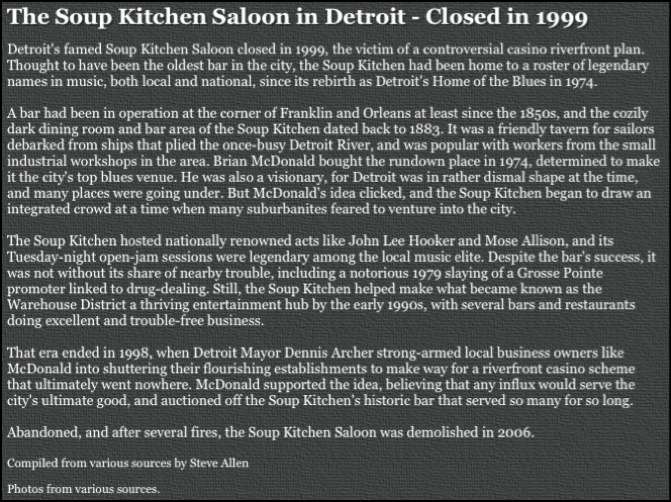
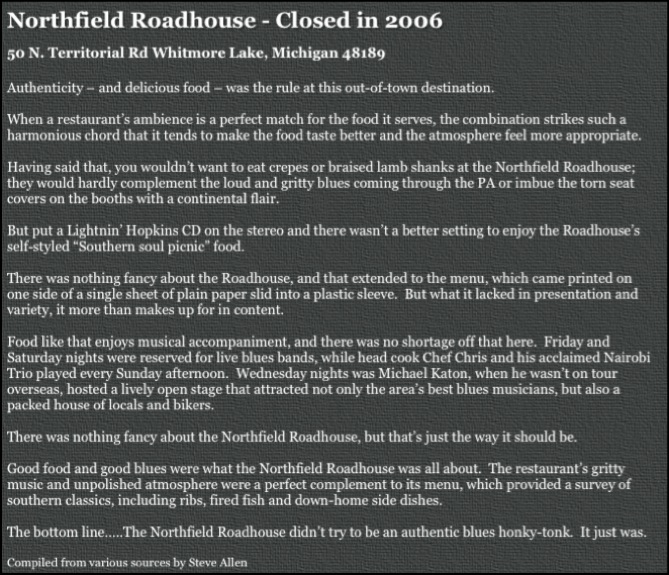
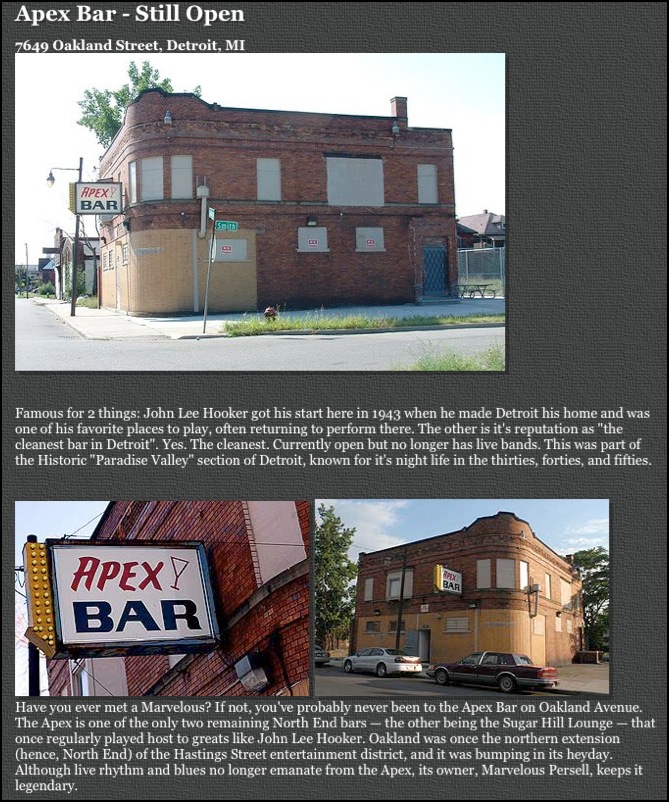
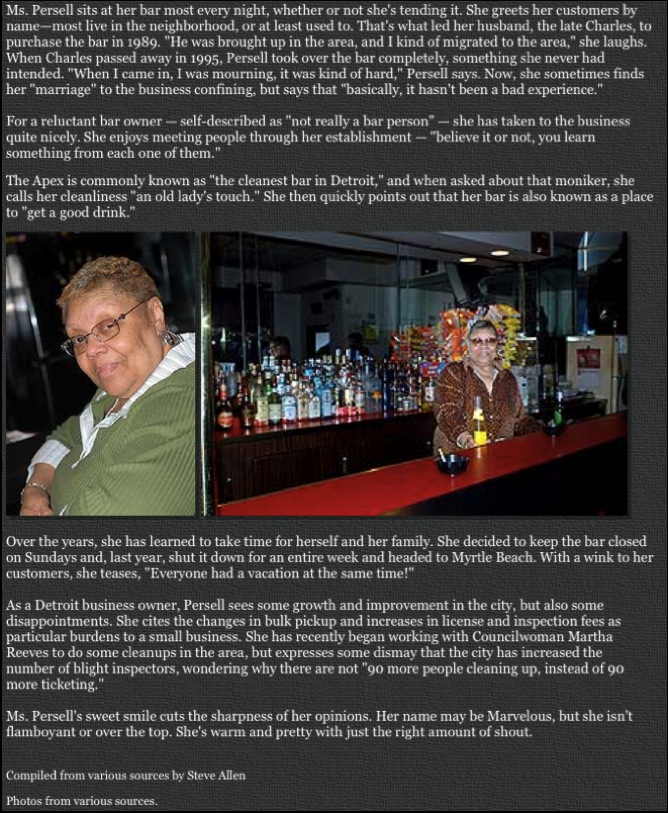
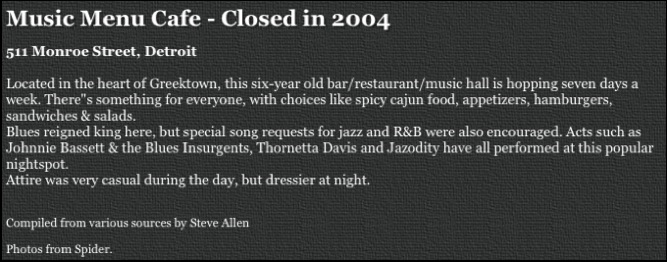
The Twenty Grand
5020 14th St (at Grand)
Detroit, MI
The Twenty Grand was a one of a kind entertainment
center, featuring some of the best entertainers in the world. I had
the pleasure of the 20 Grand Experience for a number of years and
because of my personal relationship with the owners BK and Marty I
was able to showcase several artists that I produced or managed;
Emanuel Lasky, The Different Shades of Brown, The Monticello's,
Eddie Hill, Joe Matthews to name a few. BK was very instrumental in
keeping R&B flowing in the city and it's too bad that there has
never been anything to date quite like it.
The 20 Grand was a place where people could go to
dance, and see live performances on Thursday, Friday and Saturday.
There was also a club night for youths. On the first floor of The 20
Grand there was a bowling alley and a fireside lounge that was used
as a jazz room. On the upper floor there was a room called the Gold
Room, which consist of a large banquet and a cabaret hall which
could seat up to 1,200 people. There was a studio inside The 20
Grand built for Ernie Durham, a famous Detroit radio personality.
There was also the Driftwood Lounge which was located next to the
Golden Room, which was where most of the performances and shows took
place. Joe Johnson, Chuck Jackson and Stevie Wonder performed there.
There was a motel located next door where couples would check in
after a long night out at the club. The name of the motel was Twenty
Grand Motel but it was not owned by the owner of The 20 Grand; it
was owned by a man named Ed Wingate.
For those of you that never had the opportunity to enter the doors
of this Famous Venue; that had the likes of The Temptations, The
Miracles, The Tops, Martha Reeves, Jackie Wilson, Chuck Jackson, The
Flamingoes, Funkadelic, Edwin Starr, Bill Doggett, Jimmy Smith, The
Spinners, The Marvelettes, Marvin Gaye, The Contours, The Supremes,
Billy Stewart, Joe Tex, Marlena Shaw, Brook Benton, and so many
talented others; I almost feel sorry for you, because I don't think
it will ever get any better than the above shows that I personally
had the good fortune to enjoy.
The 20 Grand opened it's doors for the first time, way back in 1953.
It's owners, Bill Kabbush and Marty Eisner were a formidable
partnership who had a love of Rhythm and Blues.
A fire destroyed the club in 1958, however, but instead of going out
of business they rebuilt the 20 Grand into what would become one of
the greatest institutions in the history of popular music.
In those days, many clubs would have exotic dancers
on their bill. Lottie 'The Body' Graves, was seen as Detroit's
answer to Gypsy Rose Lee. Marvin Gaye and Anna Gordy would hold
their wedding reception at the 20 Grand in 1960. Smokey and
Claudette Robinson would also do their courting there.
I will cherish the memories of every artist that
worked and walked through the doors of the 20 Grand Lounge.
Clay McMurray, former writer, producer, engineer for Motown Records.

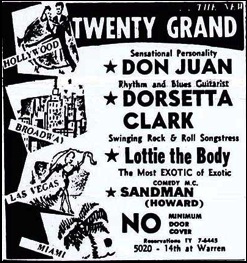
Phelps Lounge
9000 Oakland St
Detroit, MI, 48211
The Phelps Lounge was one of the known nightclubs in Detroit. You
might call it the class “A” nightclub in Detroit at that time.
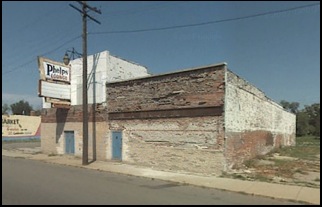
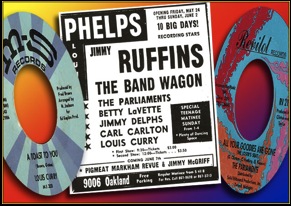
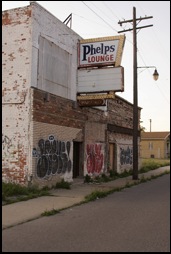
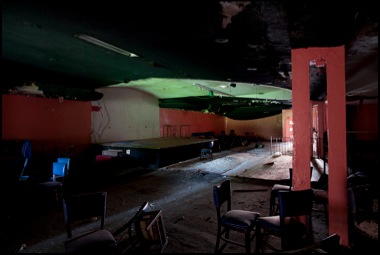
Eastown Theatre
8041 Harper Avenue
Detroit
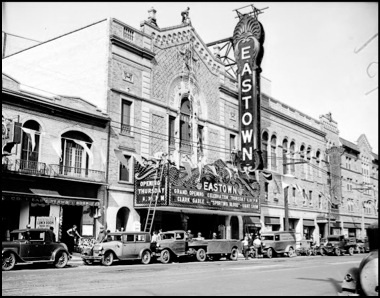
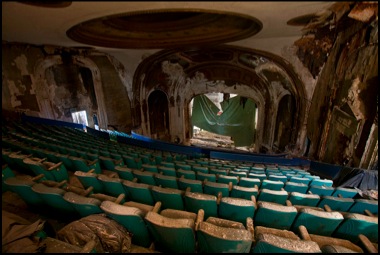
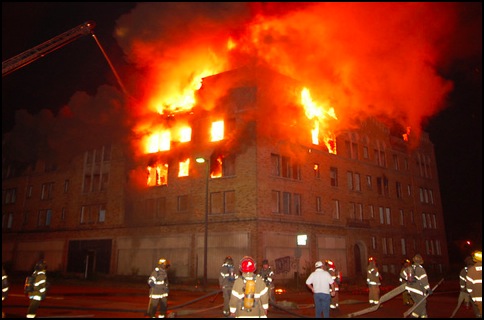
Though the Eastown Theatre closed as a movie house
during the mid-1960’s, its second life was just beginning, for which
it would be much better known, as one of Detroit’s premiere rock
venues.
Beginning in 1969, the list of performers on the Eastown’s stage
reads like a who’s-who of rock and roll of that era. Alice Cooper,
the Doors, Pink Floyd, Jefferson Airplane, Bob Seger, Jethro Tull
and the Grateful Dead are just a few of the bands who played here
between 1969 and 1973.
It was forced to shut down in 1973 by the city of Detroit, cited for
failing to meet health and safety codes. In 1975, it reopened as a
jazz venue, which remained in operation for about a year. After
this, it was used for a short time for performing arts and live
theater, but again closed down.
In 1980, the Eastown Theatre began to show adult films under a new
name, the Showcase, but closed again in 1984. From 1984 until 1990,
the Eastown Theatre was again home to a performing arts group.
During the mid-90s, the Eastown Theatre hosted raves, and later
housed a church. The building still stands, today.
Campus Ballroom
4120 Fenkell (just off of Livernois)
Detroit

This building was built between 1926 and 1928. It was
a popular meeting place in 1945. Funkadelic played a gig here in
1970. It is located near the U of D Mercy - McNichols Campus. Ernie
D ( Frantic Ernie Durham ) - a popular Radio Disc Jockey here in
Detroit, used to run events here on the top floor and owned a record
store on the first floor.
Flame Show Bar

Gayety Theater
Cadillac Square and Bates St.
Detroit
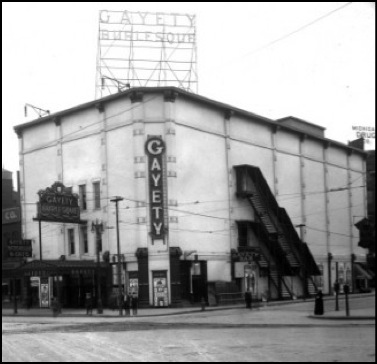
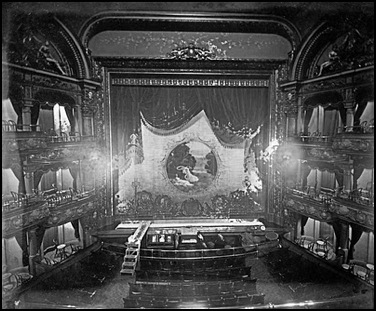
The Gayety, designed by Fuller Claflin, seated 1,362 and opened
Sept. 15, 1912. The theater hosted burlesque its entire career. It
was once operated by Frank Bryan and Frank Engel. The Gayety closed
April 10, 1958, and was demolished soon thereafter. Today, a parking
lot resides on the property.
Grande Ballroom
8952 Grand River Avenue
Detroit
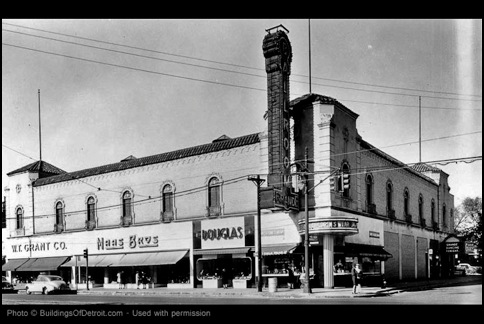

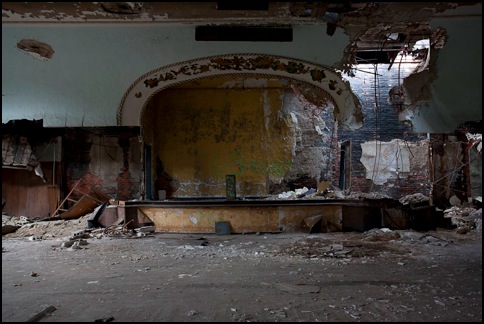
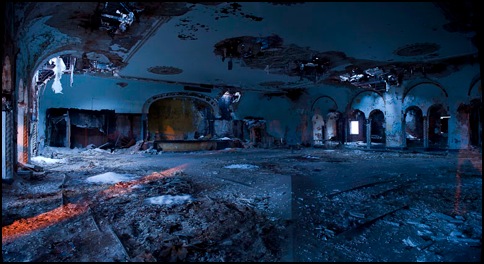
The Grande Ballroom is a historic live music venue located at 8952
Grand River Avenue in Detroit, Michigan. The building was designed
by Detroit engineer and architect Charles N. Agree in 1928 and
originally served as a multi-purpose building, hosting retail
business on the first floor and a large dance hall upstairs.[1]
During this period the Grande was renowned for its outstanding
hardwood dance floor which took up most of the second floor.
n 1966 the Grande was acquired by Dearborn, Michigan, high school
teacher and local radio DJ Russ Gibb. Gibb was inspired by visiting
San Francisco's Fillmore Theater, and envisioned a similar venue in
Detroit for the new psychedelic music and a resource for local
teenagers. Gibb worked closely with Detroit counterculture figure
John Sinclair and legendary Hugh "JEEP" Holland (agent, producer
manager of many local bands) in bringing in bands from San
Francisco, Europe and the neighbouring States and the top level of
local/regional rock bands, including the MC5, SRC, Rationals,
Catfish, Frost, Savage Grace, James Gang, Ted Nugent, Wilson Mower
Pursuit, Sky, Third Power, All the Lonely people, Teegarden and
Vanwinkle and many others who were gathering around Detroit's Plum
Street community as well as the suburbs, as far afield as Ann Arbour.
With managers Tom Wright, Bill Robbins and others (including,
periodically Jeep and Sinclair themselves) and legendary local
character (and all round goodguy) Dave Miller, the club booked and
presented many national and international acts - as well as future
Rock and Roll Hall of Famers - of this period included Led Zeppelin,
Janis Joplin, Pink Floyd, The Grateful Dead, Howlin' Wolf, John Lee
Hooker, Jeff Beck, Procol Harum, Cream and The Who. The MC5, The
Tymes, and The Stooges served as house bands, assuring weekly
performances. The Grande also featured the avant garde jazz of John
Coltrane and Sun Ra.
Performances of this period were frequently advertised by the
distinctive psychedelic handbills of Gary Grimshaw and Carl
Lundgren. The Grande's rock and roll countercultural experience was
extensively documented by Detroit photographer Leni Sinclair.
Since Gibb closed the Grande as a rock venue in 1972, the building
has rarely been used and has fallen into a state of extreme
disrepair. As of 2012 it remained inactive and open to
redevelopment.
Latin Quarters
3067 W. Grand Boulevard
Detroit
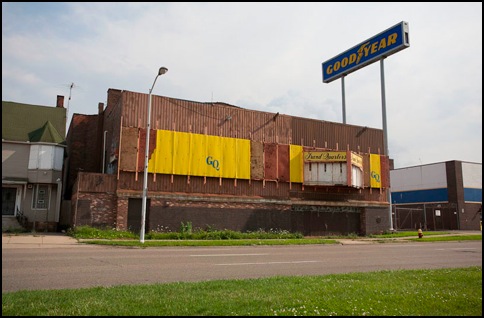
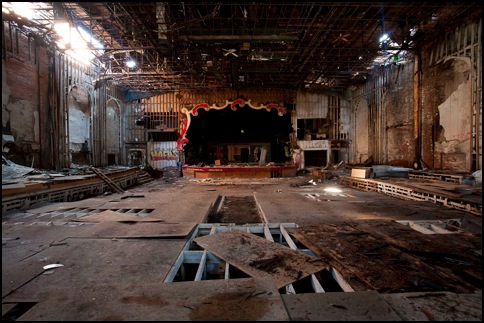
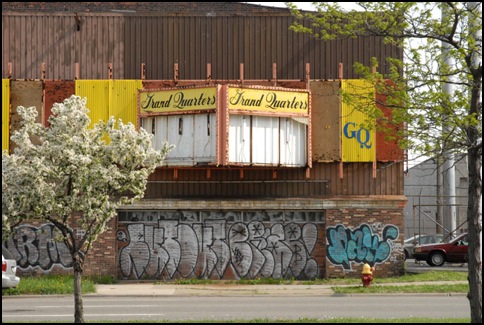
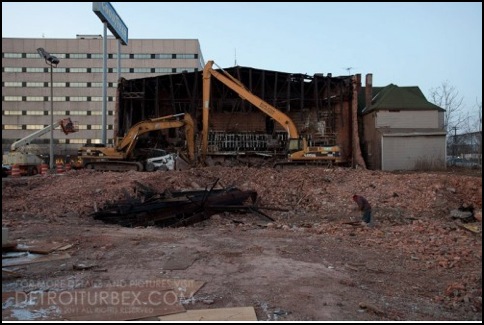
On East Grand Blvd between Woodward Ave and John R
was the site of Latin Quarters, a club that is rumored to have once
hosted music greats such as Stevie Wonder, Marvin Gaye, The
Supremes, Duke Ellington, Ella Fitzgerald, Sonic Youth, Sophie
Tucker, Lena Horne, Jimmy Durante, Sammy Davis Jr, Arlene Dahl and
the Red Hot Chili Peppers. But as of this week it's gone, apparently
four years after tarnished Detroit Mayor Kwame Kilpatrick first
planned to take it town.
DetroitYES! commenters are also reporting that is was originally two
movie theaters; the sign still says Grand Quarters, which was
reportedly a ritzy night spot.
Vanity Ballroom
1024 Newport Street
Detroit
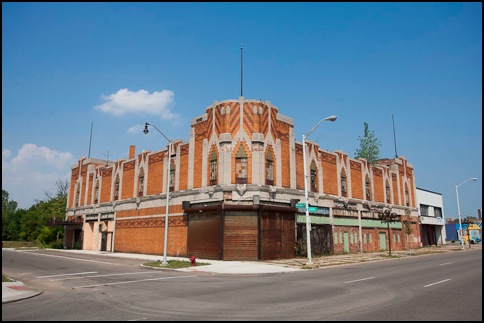
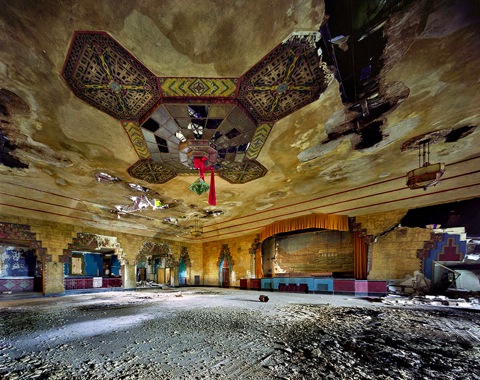

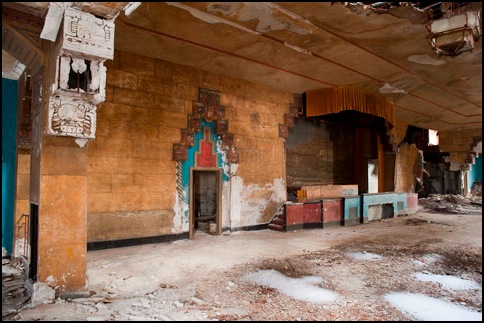
The Vanity Ballroom was designed in 1929 by Charles
N. Agree as a flamboyant venue in which to socialize, dance and hear
music.[4] The ballroom was a major venue for bands of the 1930s and
1940s, such as those of Tommy Dorsey, Jimmy Dorsey, Duke Ellington,
Benny Goodman, Red Nichols, Russ Morgan, Art Mooney, Woody Herman,
and Pee Wee Hunt. The Vanity billed itself as "Detroit's most
beautiful dance rendezvous."
The ballroom was closed in 1958, but reopened in 1964 for one night
a week. It was eventually completely shuttered, and although it
played a bit part in Eminem's movie, 8 Mile, it remains closed and
dilapidated.
The Vanity Ballroom is a two-story building originally containing
five retail shops on the first floor and a ballroom on the second.
It is built in the Art Deco style with an Aztec or Mayan Revival
theme and measures 125 feet (38 m) by 121 feet. It is constructed of
steel and reinforced concrete and faced with brick. The bulk of the
brickwork uses orange brick; this is complemented with darker brick
and cast stones. There is a three-sided entrance pavilion at the
corner of the structure, and the façades to either side (along both
Jefferson Avenue and Newport Street) are nearly identical. These
façades terminate in smaller entrance pavilions; all three pavilions
are slightly taller than the rest of the façades and contain a
geometric stone pattern near the top. The multi-paned windows on the
second floor are flanked by pilasters and topped with Art Deco
geometric designs echoing those of the Aztecs.
The ballroom inside was built to hold 1,000 couples, and has a 5,600
square-foot maple dance floor, a stage/bandstand, and a promenade on
three sides. The dance floor was built on springs which
intentionally sank under the weight of the people who danced on it,
giving the dancers a "bounce" as they moved. The backdrop of the
stage features a scene representing Chichen Itza.
Three of the retail shops on the first floor also had interiors
designed by Agree; their interiors echo the Art Deco Aztec theme of
the exterior. Within the retail spaces, Agree used elements such as
wood and marble trim and terrazzo floors.
The exteriors of these first floor stores have been substantially
changed.
Griff's Grill
49 N. Saginaw St.
Pontiac, MI, 48342
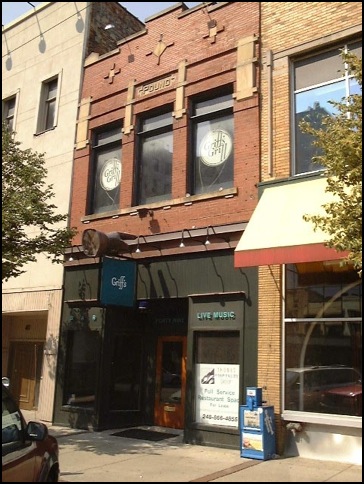
Griff’s was the oldest bar in Oakland County, holding
the first liquor license issued after the end of Prohibition. It had
a full menu of great food, such as burgers, sandwiches and homemade
soups. There was a separate band room upstairs with live
entertainment every Friday and Saturday. Sadly, this place is no
longer open.

